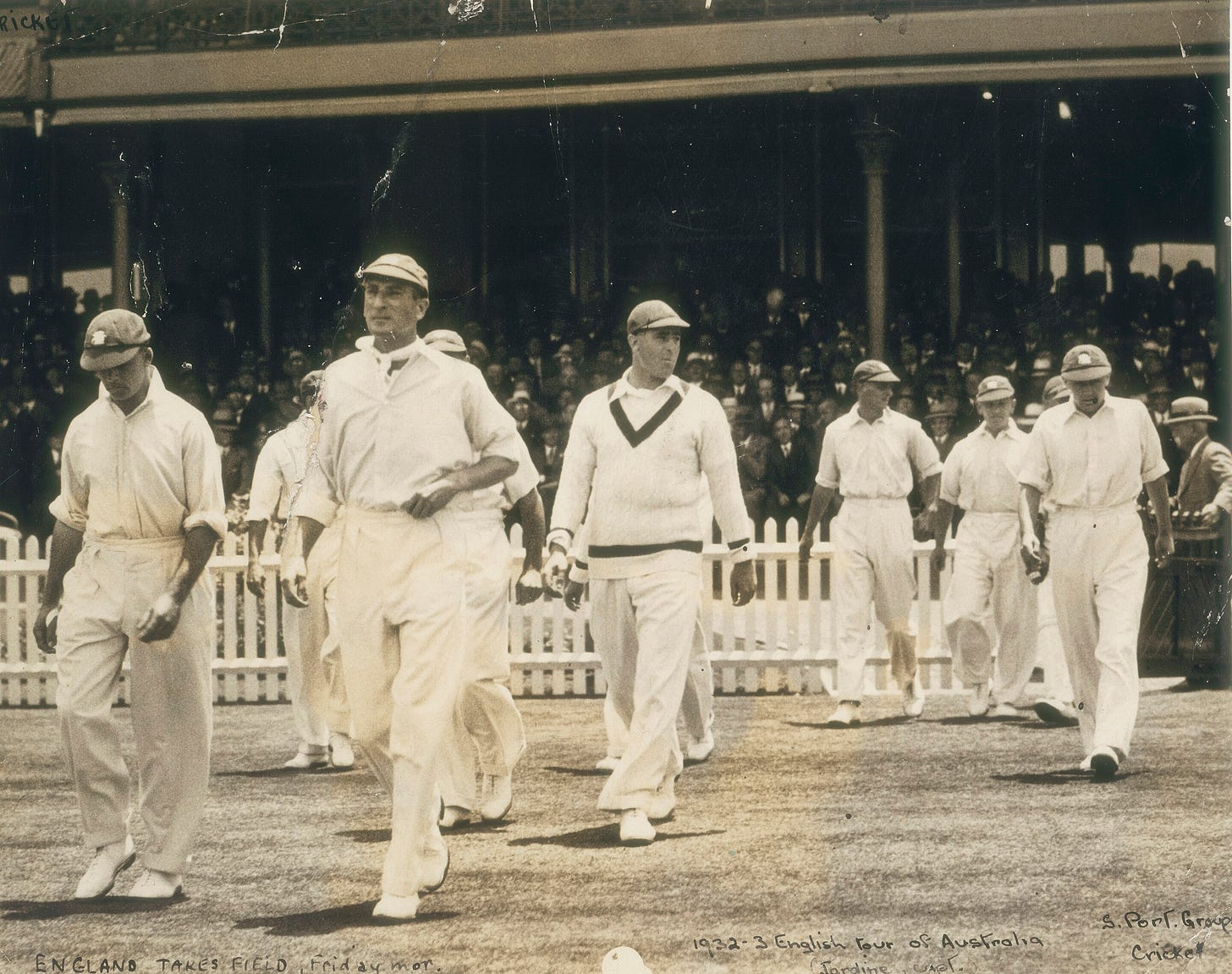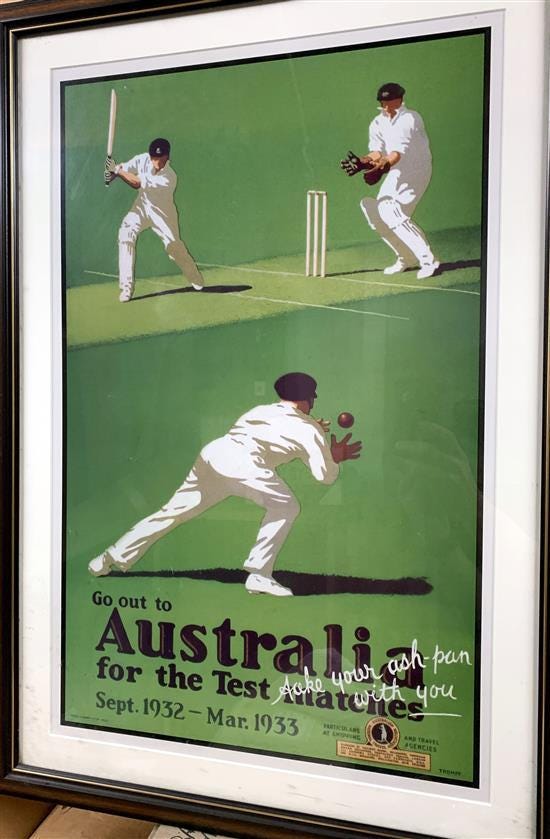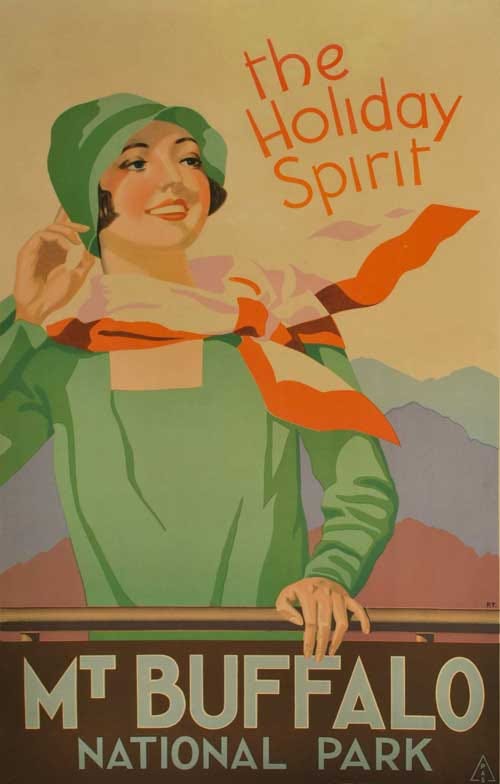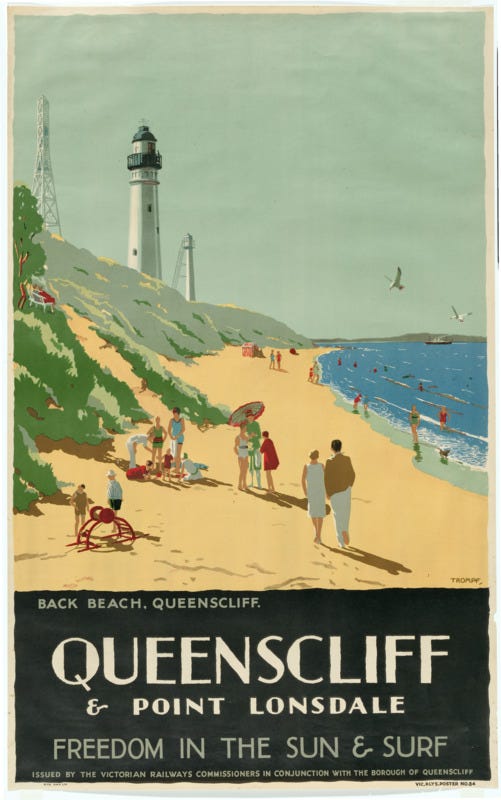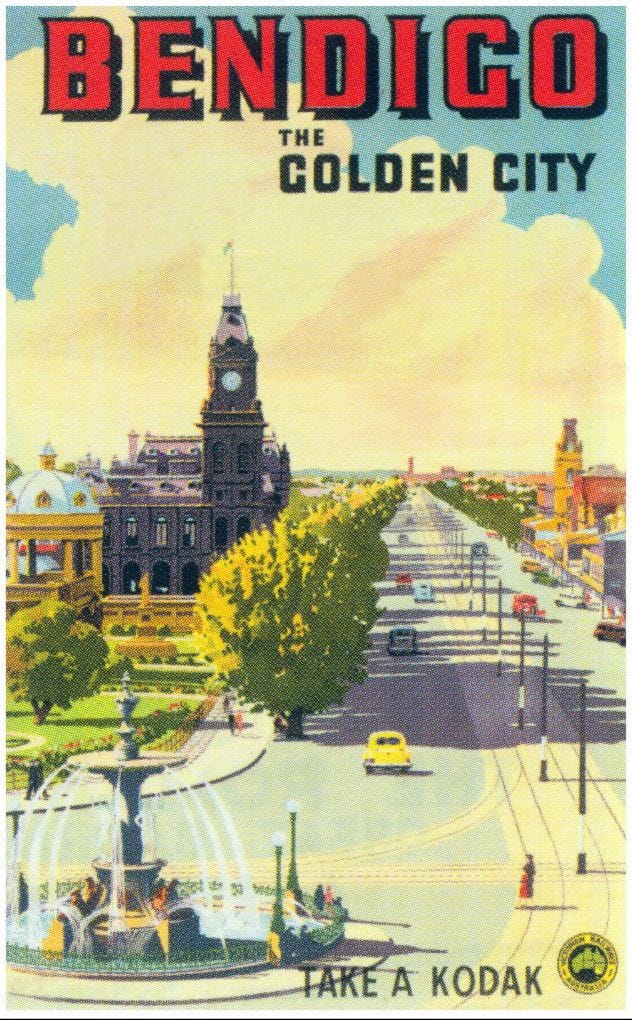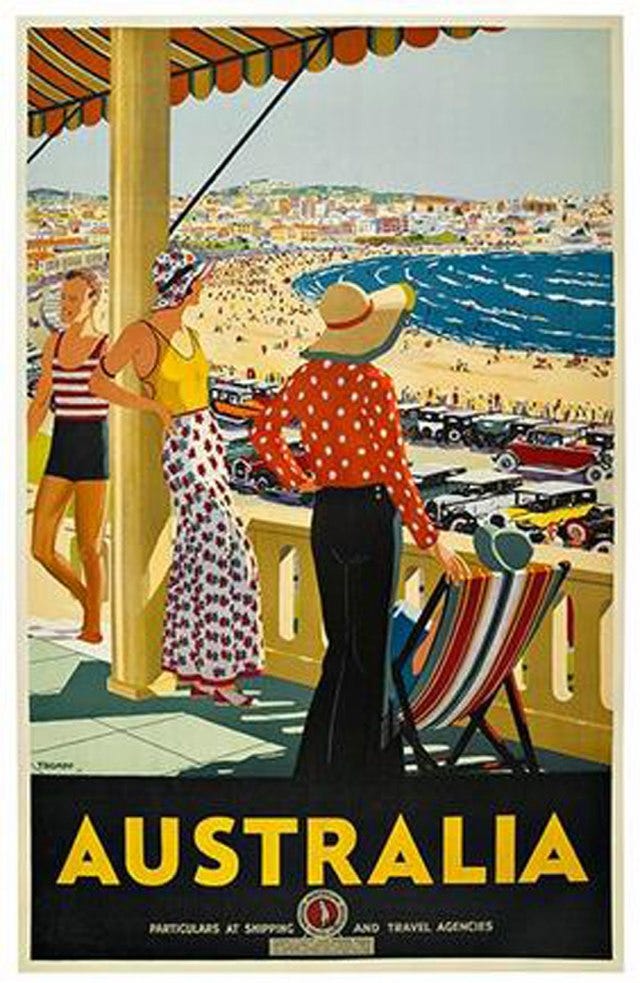Selling Cricket to the English
An iconic shot selling a cricket utopia, Dan Toomey explores the making of the 1932 Ashes series poster
Cricket fans have a strong grasp on how this years Ashes Series is going to be sold to us (not that it needs to). Australian home Ashes series; You’d think we’ll get some packages about the last series and it’s hostilities. Shots of the firey MCC Members room, press headlines, Bairstow looking coy, Broad pointing at Cummins.
I’ve not yet got to how the English are selling the drama – but recent events have presented a team with a (very) strong self-image.
While the modern series are sold on combative spectacle what was to become the Bodyline series was sold with a restrained and single image of elegance. The game itself rather than drama was the selling point in Percy Trompf’s iconic Ashes Poster.
Optimism is being sold, not combat.
The poster itself is an incredible lithograph and an image of an emerging and upbeat nation. The events of the series elevated it to a true icon. Its naivety and vigour present an emerging nation finding its feet in the interwar years.
It depicts the calm before the schism of Bodyline and that’s what makes this a classic.
The artist
Percy Trompf was born at Beaufort, west of Ballarat. A keen chorister and cricketer he completed his education at Ballarat Technical Art School in 1917 after the family moved to the larger town.
He designed confectionary wrappings for a time for a firm before starting out on his own as a commercial artist in the early 1920’s. From here, he quietly set about helping Australia to publish in image of itself on billboards and hoardings rather than galleries and novels.
His early vibrant depictions of Australian life appeared in his work with Victorian Railways.
Selling movement and modern Australia
During the 1920’s, Victorian Railways aggressively marketed to factory workers and tradesmen offering ‘excursion fares’ to encourage workers to get of Melbourne for a day and take in the healthy, outdoorsy lifestyle.
The legendary railways administrator (and notably orderly) Harold Clapp commissioned these types of work to help brighten Victorian rail stations and sell travel to the masses.
Given the modest life most Australians were living post war sport and recreation were becoming an affordable pastime, a break from the recovery effort.
Bushwalking and going to the beach were affordable and vital pastimes for city-based workers. The advertised images leaned into this vitality, pitching an active, playful and adventurous lifestyle as central to interwar life.
Workers would pack picnics to keep costs down. Football and cricket matches were cheap or free to attend. The vistas and fit and healthy figures on hoardings were only a train ride away for city workers.
These affordable escapes helped to engrain the mobility, health, sport and recreation to an emerging national identity. Percy Trompfs work on these posters started to help shape the image modern Australia would share with the world.
Long before Paul Hogan threw a shrimp on the barbie, The Australian National Travel Association would commission the deco lines and flat colour prints to start a home-grown branding campaign of the southern continent.
The art, man…
Trompf’s posters depicted the interwar years in simplified realism. The sleek lines and bold typography are iconic Art Deco, the aesthetic that depicted the sun soaked Australian life.
Deco was the design language of optimism and stability after the war years. Its symmetry and balance from geometric shapes brought a sense of stability. It’s bright colours brought a sense of abundance.
All over the world posters were published with a sense of nation building. The TPA posters of America and travel posters of Europe projected emerging health and confidence. Trompf and others used the lines and shapes of Deco to show a modern and healthy country.
Keep reading with a 7-day free trial
Subscribe to Cricket Et Al to keep reading this post and get 7 days of free access to the full post archives.



